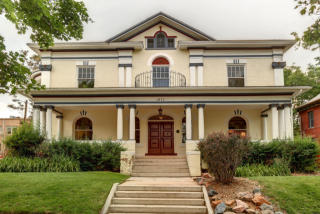The Cheesman Park neighborhood is one of Denver’s oldest residential areas. The first recorded plat for the area is dated 1868. The majority of the land was annexed to the city under the Session Laws of 1883. By the end of the 1880s, the entire neighborhood was platted and sparse development had occurred. The neighborhood was almost totally developed by 1915, and was characterized by large homes for the wealthy. Cheesman Park and the land that is now the Botanic Gardens was given to the city for use as a cemetery in 1872 by a congressional grant. In 1893, Congress awarded a grant to permit its use as a park. The early burial ground in Cheesman, called Congress Park until the 1930s, was then removed. It was not until 1938, however, that the city finished removing tombstones from the Botanic Gardens and the arboretum development began. During the Speer administration, the Cheesman Park Esplanade was acquired and the Seventh Avenue parkway was developed.
By the 1930s, the Cheesman Park neighborhood had become primarily an apartment district. The percentage of home owners has decreased steadily until, in the 1990 census, only 7.2 percent of the housing units in the neighborhood were listed as owner-occupied. Population density is now among the highest in the city.
Cheesman Park is a complex and changing neighborhood that is in many ways a microcosm of the city as a whole. Its condition is improving because of an active and vital private market.



